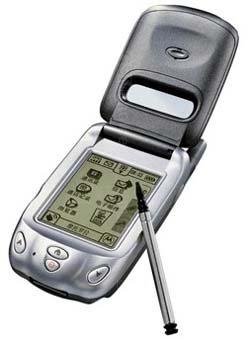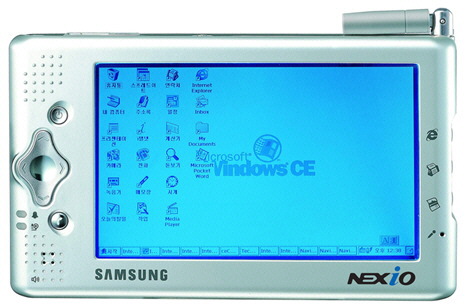3RD GENERATION CELLPHONES
THINGSText: Stefania Garassini
First of all though a question needs to be answered: will this device be classified as a telephone or a computer? As we said, the line between the two is unclear. According to Bill Gates, who presented a new operating system for Smart Phones it is simply a case of where it sits on the continuum which lies between cellphones to computers. It is not by chance that Microsoft has been developing three different kinds of software for wireless applications which correspond to three different faces of this evolution: along with the latest of these, Smart Phone, is the launch of Windows CE .Net – the operating system for palm held computers which becomes the instrument for communicating with domestic appliances and work stations – and Pocket PC – an operating system for new generation palms. The software from Microsoft, who have recently signed an agreement with Intel, the Wireless Development Initiative, for the development of a technological platform for cellphones and PDA, is countered by the applications linked to the Symbiam operating system, by Palm, adopted by amongst others, Ericsson and Nokia. This proliferation of programmes is in itself a sign of the complexity of a transformation which is anything but univocal and whose outcome is uncertain. “It is clear that the logic of products of this kind is strongly linked to the computer”, explains Maurizio Montagna, UMTS Director at Alcatel. So in this game, producers of computers have the advantage.

Motorola, A388
In effect, the number of palms on the market which are also cellphones is beginning to increase: amongst the latest models are Visor and Treo Communicator from Handspring. On the mobile phone front, Motorola has recently presented A388, equipped with fax, access to internet and PDA functions, whilst already on the market for some months is Accompli, aimed at the business market. Siemens, who have recently signed an agreement with the American giant for the development of 3G terminals, offers SX 45, very similar to a palm held computer, also in appearance, with a large screen and a touch screen interface. The primary aim of such handsets is to give space to images, which is obviously one of the fundamental applications of third generation telephones. The new telephone and palm held computer from Sony-Ericsson, P800, which will be on the market later this year, goes clearly in this direction, with a screen which covers the entire surface of the terminal.

Samsung, Nexio S150
Apart from the need to hold video images though, it is anything but clear what the principal service that 3g handsets should concentrate on will be. “This is the reason why the realisation of these devices has been so delayed – explains again Maurizio Montagna – nobody has the courage to place a decisive bet on one kind of application rather that on another. We had a negative experience with the standard WAP for example; we were the first to make handsets of this kind and then the market didn’t respond as predicted so today we are more cautious. We have concluded a deal with Samsung for building handsets with their brand but ours will arrive only when the market has matured”. The first Samsung equipped for the third generation has already been presented: it is the Nexio S150 which includes amongst other things a digital camera, an e-book and MP3 player and is available on the Korean market “In this case the prevalence of the PC object is evident – maintains Montagna -to all intents and purposes it is a palm held computer”.

National Semiconductor, Origami (concept design)
At the extreme end (towards the palms) of the line between phones and PCs is a device presented recently as a “concept design” by National Semiconductor. It is Origami, which integrates the functions of a cellphone (for the moment GPRS, but compatible with the UMTS network), a videocamera, an electronic diary (PDA Personal Digital Assistant), an MP3 format music reader and a programme for surfing the net and receiving emails. The whole thing has a decidedly innovative design, made by Cocom Group, which recalls origami, the Japanese art of folding paper. Very advanced from a design point of view is also Pogo, from the Californian Pogo Technologies, which offers itself as a multifunctional terminal strongly orientated towards graphics and image: it integrates GSM and GPRS in a device consisting mainly of a square screen with attractive lines.
This is not to say that the evolution of the telephone is tending towards an extreme integration of all functions in a single device. This “swiss army penknife” approach as Matthias Richter, senior industrial designer at Motorola, calls it, risks creating bulky objects which carry out many functions but in a rather approximate way. An alternative route is that which leads not so much to the convergence of functions but rather to their distribution in different components, according to the IT paradigm of ubiquitous computing. In other words, it is probable that at least initially the extension of functions in cellphones takes the direction of specialisation in the form of devices for entertainment.
Read more ...




